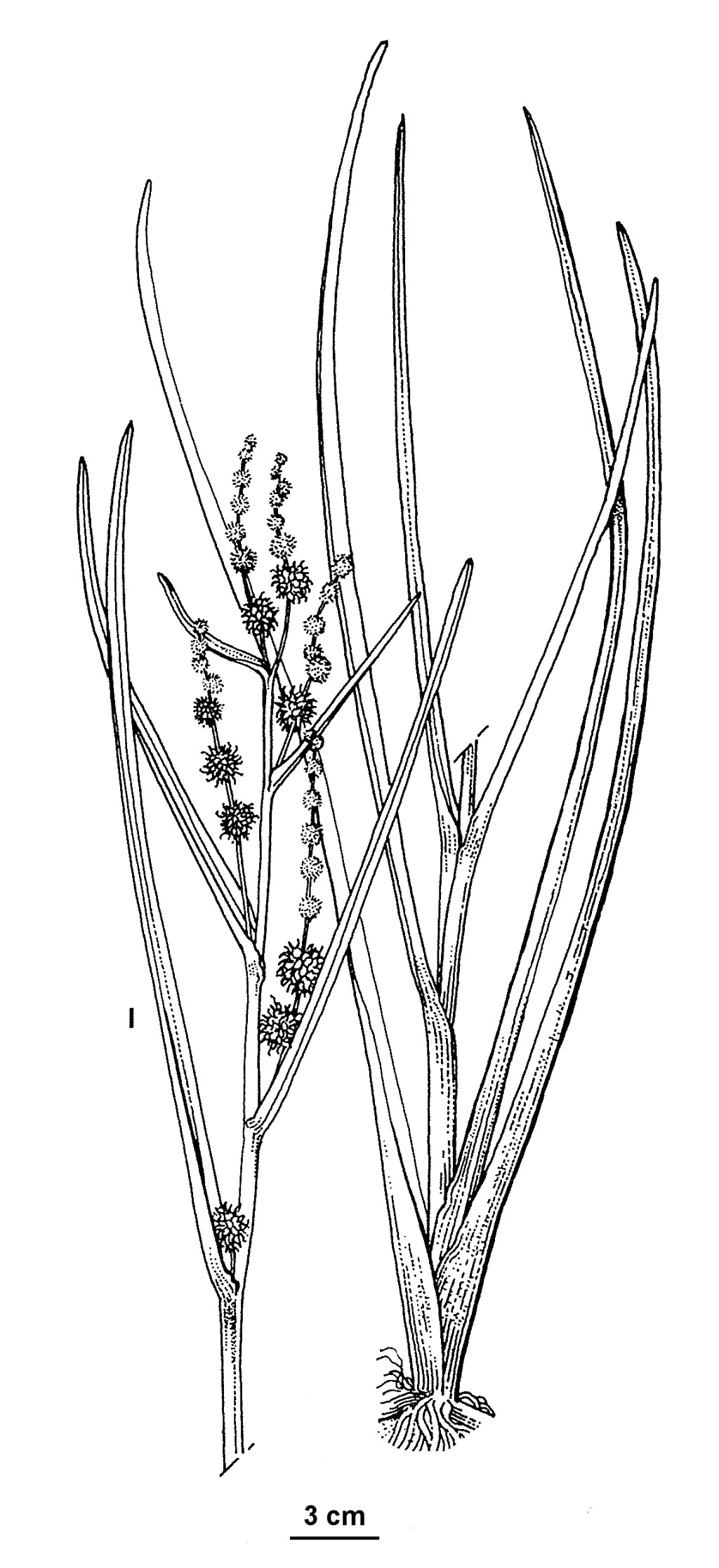Sparganium
Rhizomatous, perennial emergent herb, rooting in substrate, monoecious. Stem unbranched or with a few branches, ± erect, occasionally floating. Leaves basal and cauline, emergent, alternate and distichous, linear, erect or floating, sheathing at base. Inflorescence terminal, flexuose, unbranched or with a few branches, with unisexual flowers arranged in several globular heads; female heads subtended by a primary leaf-like bract, reduced or absent; male heads distal to female heads, not subtended by bract. Perianth parts 1–6, papery, ± oblong to irregular in shape, shorter than fruit and stamens. Female flowers with ovary superior, 1- or 2-locular; ovule 1 per loculus, anatropous, pendulous; style unbranched or once divided, persistent in fruit; stigma on one side of style apex. Male flowers 8–15 mm wide, with 1–8 stamens; filaments free or partly united; anthers basiflxed, oblong. Infructescence forming a hard burr-like cluster of drupe-like indehiscent fruits.
12–19 species, throughout the temperate regions of the Northern Hemisphere, extending from Malesia to Australia and New Zealand; 2 species in Australia and Victoria.
References: Aston (1973), Cook (1990), Sainty & Jacobs (1981).
Conn, B.J. (1994). Sparganiaceae. In: Walsh, N.G.; Entwisle, T.J., Flora of Victoria Vol. 2, Ferns and Allied Plants, Conifers and Monocotyledons, pp. 630–631. Inkata Press, Melbourne.
 Spinning
Spinning

